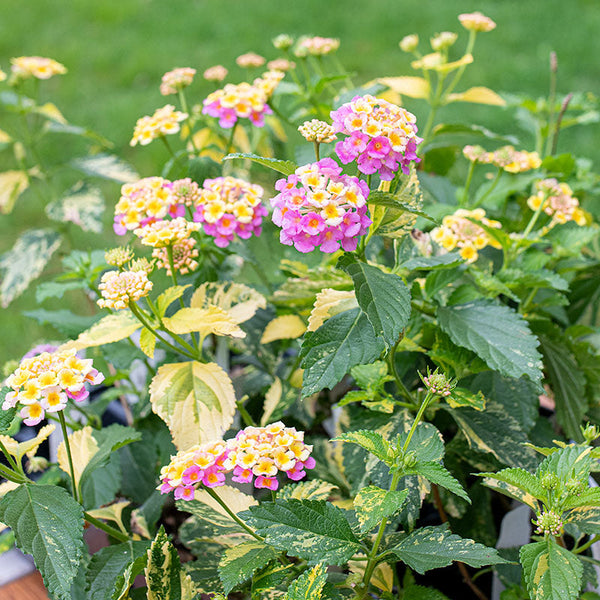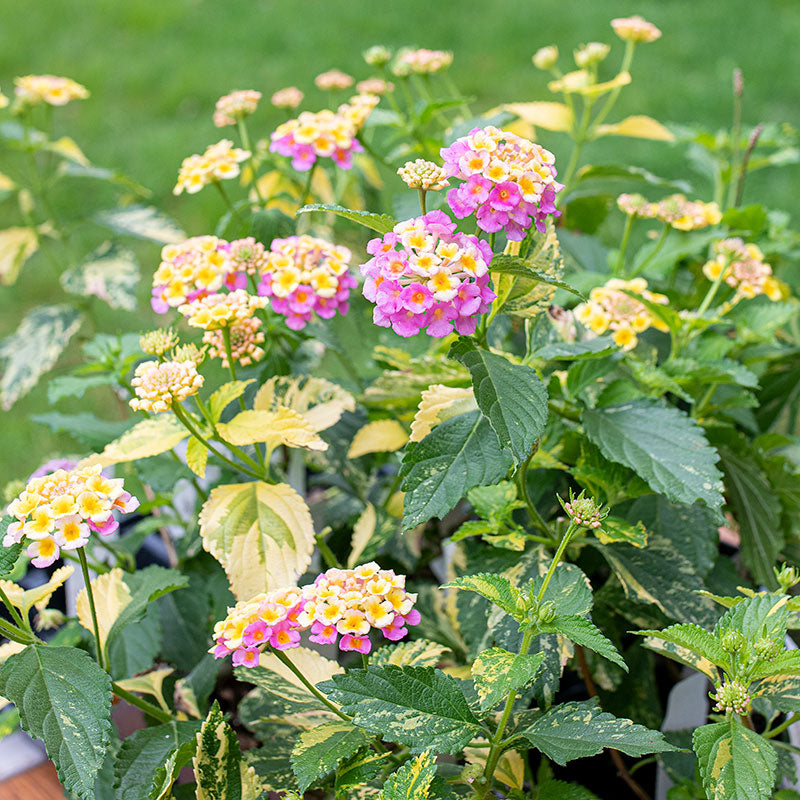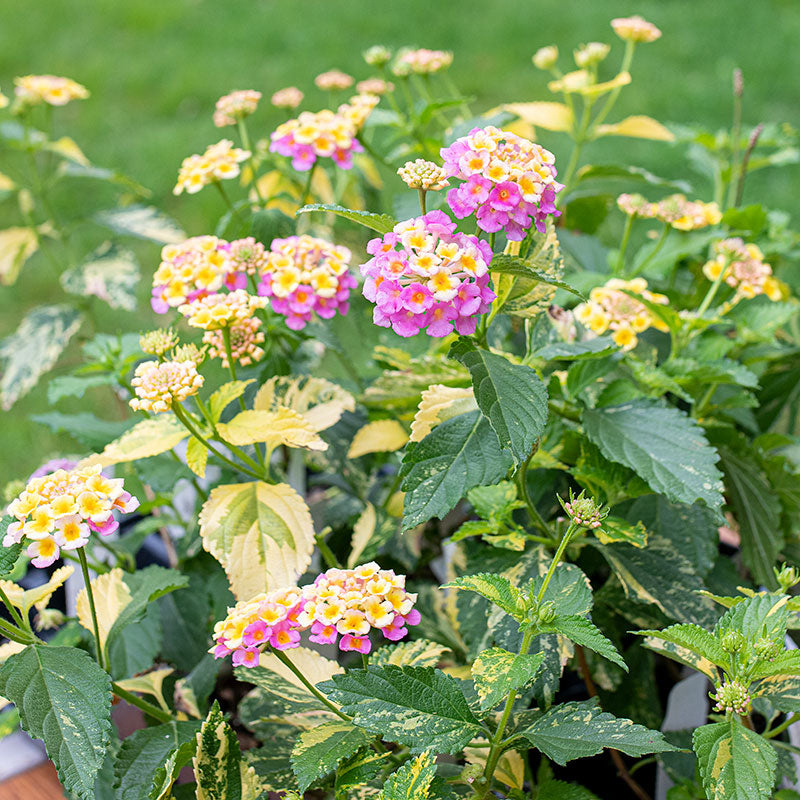Plant
Lantana 'Greg Grant'
Lantana camara
Honey-drizzled pink flower clusters bloom all summer and fall over the lemon and green variegated foliage. Butterflies elbow each other out of the way to get at its abundant nectar. Found by plant rustler Greg Grant in a churchyard in Texas! Some branches will revert to all green.
SKU #P8490
Caution: Poisonous. The purchaser assumes all liability related to the use of this product.
Currently Unavailable
Notify Me When Available
































